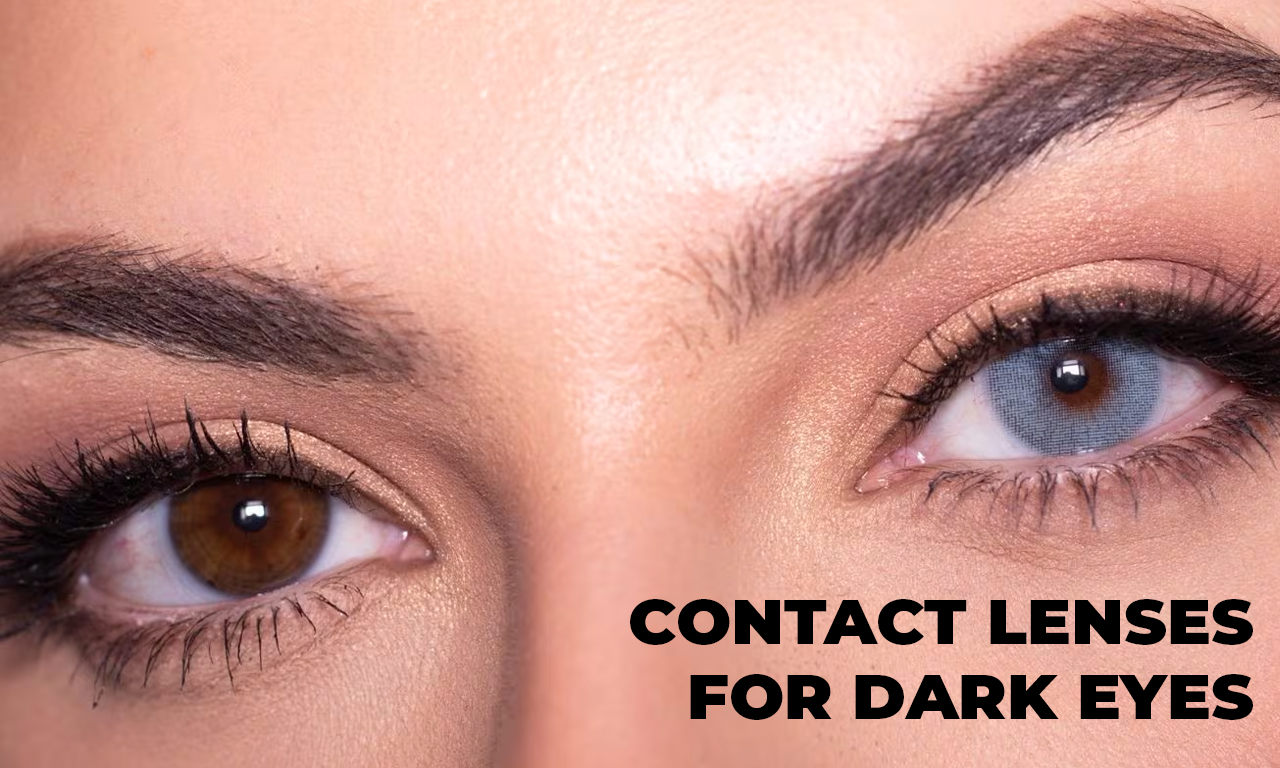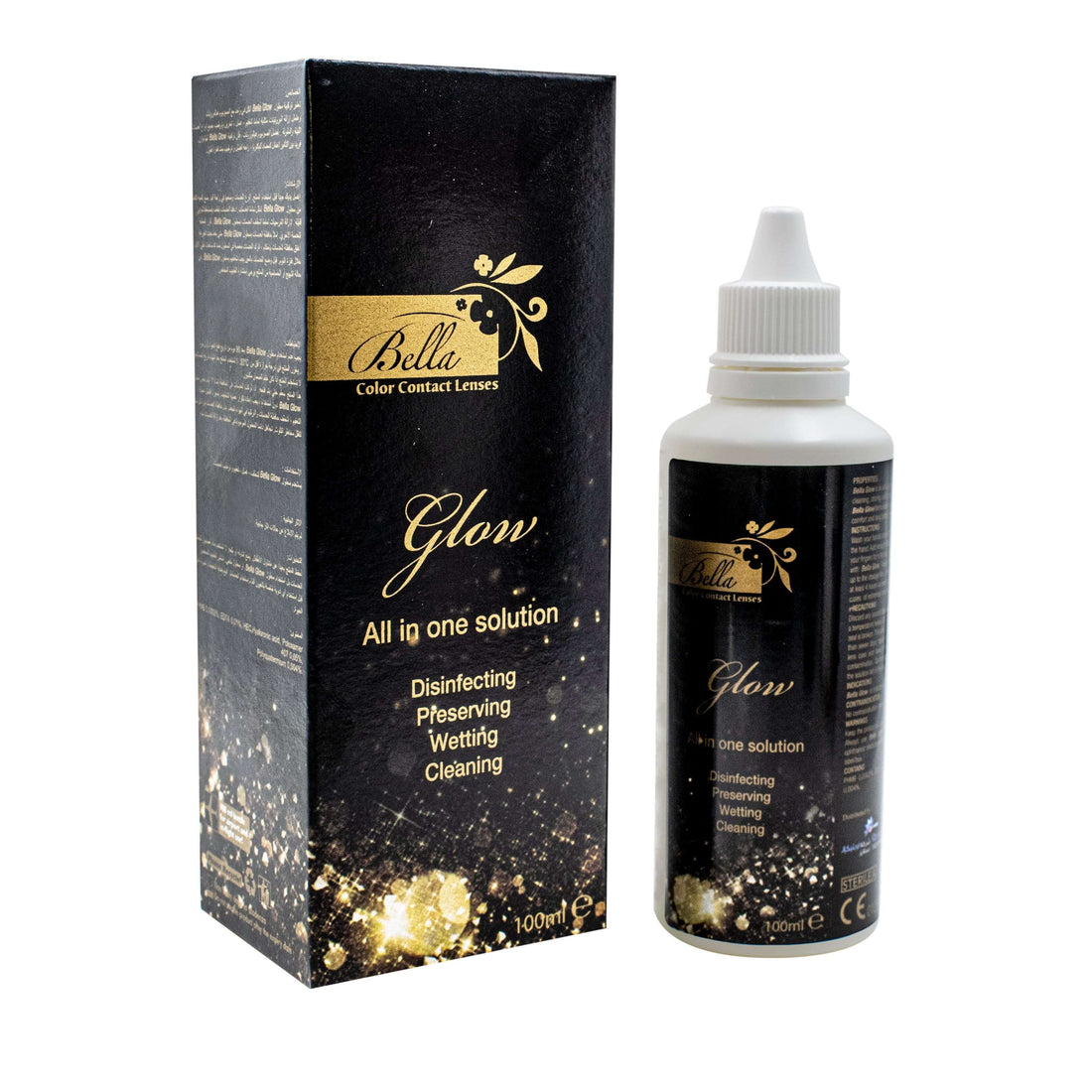Key Takeaways
-
Opaque or semi-opaque lenses work best for dark eyes
-
Choose lenses with high pigmentation for noticeable color change
-
Popular colors for dark eyes include blue, green, gray, and hazel
-
Always purchase FDA-approved lenses from reputable retailers
-
Proper care and hygiene are essential for eye health
How Color Contact Lenses Work on Dark Eyes
Color contact lenses work on brown eyes by using a combination of color opacity and patterns to either enhance or completely change the natural eye color. Brown eyes have a higher amount of melanin, the pigment responsible for their color, which makes it slightly more challenging to achieve a noticeable color change compared to lighter-colored eyes.
The melanin in dark eyes can affect how colored contacts appear when worn. When selecting lenses for dark eyes, two critical factors determine effectiveness:
Opacity Levels
Opaque or semi-opaque contacts are the best colored contacts for dark eyes, especially for those who want to totally switch to a different eye color. This means the lens has more colored pixels per unit surface area. Unlike enhancement tints designed for lighter eyes, opaque lenses have higher pigmentation that can transform even the darkest brown eyes to light blues or greens.
Lens Design and Pattern
To cover dark eyes, you need to make sure that the pattern has a small optical zone (central blank area for your pupil to see through), or that it extends furthest towards the center without obscuring your vision. The design of the lens plays a crucial role in creating a natural appearance while effectively covering your natural eye color.
Learn more about colored contact lenses
Types of Color Contact Lenses
The iris features lines and dots that create each person's distinctive eye color. Colored contact lenses mimic the appearance of the iris, using various tints to achieve different looks. The center of the lens is always clear to ensure unobstructed vision through the pupil.
Visibility Tint
These lenses have a very light blue or turquoise tint to help you see them when handling. They don't change your eye color and are primarily for practical purposes.
Enhancement Tint
These lenses are designed to enhance your natural eye color rather than change it completely. For dark eyes, enhancement tints typically have minimal effect since they can't overcome the natural color.
Blending Tints
Blending-type tints in colored contact lenses are tints that blend colors gradually with more opaque shades at the outer edges, and less opaque towards the middle of the lens. This color-blending tint helps make a more natural-looking eye color.
Opaque Tints
Opaque tints are non-transparent tints that will entirely change your eye color. These opaque-tinted colored contact lenses usually come in an incredible array of colors, from natural to theatrical. For dark-eyed individuals, opaque tints are essential for achieving a noticeable color change.
Best Colors for Dark Eyes
Choosing the right color for your dark eyes depends on the look you want to achieve. Here are popular options that work well on dark brown eyes:
Blue Contact Lenses for Dark Eyes
Blue is actually one of the top choices of colored contacts for brown eyes. When selecting blue contact lenses for dark brown eyes, it is crucial to choose lenses with high opacity and a pattern that complements your skin tone and facial features for the most realistic appearance.
Popular blue options include:
-
Sapphire blue tones rather than light blues
-
Blue lenses with multiple tones for dimension
-
Options with subtle limbal rings for definition
Green Contact Lenses for Dark Eyes
Green is another top choice of color for people with brown eyes, especially if you want to achieve a mysterious, alluring look. The good thing about green contacts is that they look very natural when worn on brown eyes, since most green patterns have specks of yellow or beige to deliver a smooth transition.
For green lenses, consider:
-
Emerald or jade tones for vibrant looks
-
Options with gold flecks for natural dimension
-
Forest green for more dramatic transformation
Gray Contact Lenses for Dark Eyes
Gray is a stunning color, especially when featured as a tri-blended colored contact lens on darker eyes. If you don't really want to go all-out in changing the color of your eyes, but simply want to jazz up your look a bit, this may be the best choice for you.
Gray lenses offer:
-
A sophisticated, mysterious look
-
Versatility that complements all skin tones
-
Options from light silver to deep charcoal
Hazel and Brown Contact Lenses for Dark Eyes
For a more subtle change, hazel and light brown lenses can enhance your natural eye color:
These natural colored contacts for dark eyes will lighten up your eye color without looking too made-up. Perfect for those who like to remain low-key, but want to see a visible difference.
How to Choose the Right Lenses for Your Dark Eyes
Selecting the perfect colored contacts involves considering several factors:
Consider Your Skin Tone
Choose colors that complement your skin tone:
-
Warm skin tones: Amber, honey, light brown, hazel
-
Cool skin tones: Blue, purple, gray, green
-
Neutral skin tones: Most colors work well
Think About Natural-Looking vs. Dramatic Change
Depending on your desired effect, you can choose from a range of natural-looking to more dramatic options. Natural-looking lenses are designed to mimic the patterns and shades of real irises, offering a more believable transformation. In contrast, dramatic lenses feature bolder colors and designs for a more eye-catching change.
Limbal Ring Options
Opaque-tinted colored contact without limbal ring: It gives a more natural effect. Perfect if you want a look with pale light eyes. Opaque-tinted colored contacts with limbal rings: They make your eyes look larger and change your eye color.
Safety Considerations
FDA Approval and Quality Standards
One of the most common reasons people wear colored contacts is because they want to have fun and alter or enhance the appearance of their eyes. A common (yet dangerous) misconception of colored contact lenses is that if they don't have vision correction, you don't need a prescription.
All contact lenses—even colored contacts for a costume that you'll only wear once—are medical devices requiring a prescription. So if you're interested, the first thing to do is schedule an appointment with an eye doctor.
Proper Care and Maintenance
To maintain eye health while wearing colored contacts:
✅ DO consult your optician or eye doctor before wearing/purchasing a pair of lenses.
✅ DO wash and dry your hands whenever you handle your lenses or attempt insertion/removal.
✅ DO soak your lenses for two hours in solution prior to inserting them into your eye.
✅ DO remove the contacts before you go to sleep, bathe, shower or partake in water sports.
Wearing Schedule
You can wear colored contact lenses for 6 to 8 hours per day depending on the brand and your eye sensitivity. Daily disposables should be thrown away after one use, while reusable lenses must be cleaned and stored properly after each wear.
FAQ About Color Contacts for Dark Eyes
Do all colored contacts work on dark eyes? No, not all colored contacts work effectively on dark eyes. Opaque lenses with high pigmentation work best for creating a noticeable color change on dark brown eyes.
Are colored contacts safe? Yes, colored contacts are totally safe to wear, as long as your contact lenses are properly fitted, worn and cared for. To stay safe when shopping for colored contacts, you should never buy from unreliable sources with counterfeit or unapproved colored contact lenses.
Do I need a prescription for colored contacts even if I don't need vision correction? Yes, you'll need to present a prescription to purchase colored contact lenses. All contact lenses are medical devices requiring proper fitting by an eye care professional.
How long do colored contacts last? This depends on the type:
-
Daily disposables: 1 day
-
Bi-weekly: 2 weeks
-
Monthly: 1 month
-
Quarterly: 3 months
-
Yearly: 12 months (with proper care)
Can I sleep in my colored contacts? No, you should never sleep in colored contacts unless specifically designed and approved for extended wear by your eye doctor.
Will colored contacts damage my eyes? Colored contact lenses are safe to use providing you are buying from an authorized seller, and you have confirmation from your eye doctor that contact lenses are suitable.
Conclusion
Color contact lenses offer an exciting way to transform your appearance or enhance your natural beauty. For those with dark eyes, opaque lenses with high pigmentation provide the best results for achieving noticeable color changes. Remember to prioritize safety by consulting with an eye care professional, purchasing from reputable sources, and following proper care instructions.
Whether you're looking for a subtle enhancement or a dramatic transformation, there's a perfect pair of colored contacts for your dark eyes. From vibrant blues and greens to sophisticated grays and hazels, the possibilities are endless.






